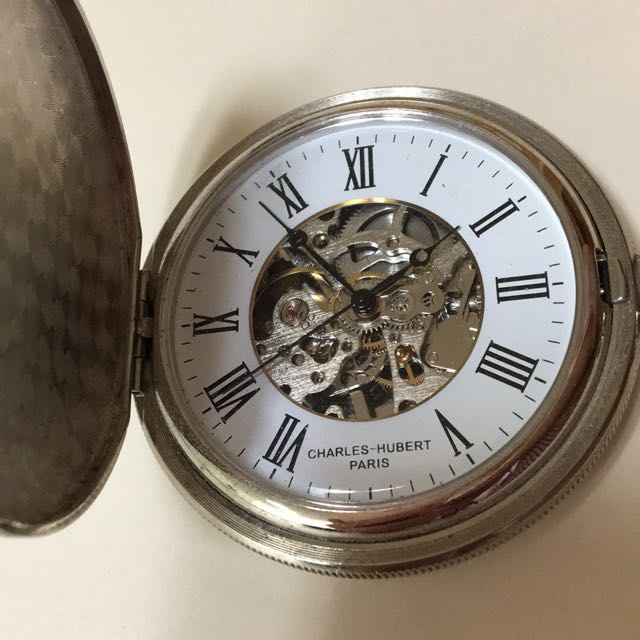|
By Graham K. Rogers

There was a bit of a fuss at the tail end of last week, when Apple pushed out an update to iOS (9.3.5) in response to an imminent threat: an attack vector that could put security at risk by way of a simple link, by way of a "set of malware and spyware called Pegasus:. The only one affected was human rights defender, Ahmed Mansoor, based in the UAE, who was wary of links in an SMS and set the alarms ringing when he contacted researchers. They confirmed this was an attack. As Rene Ritchie explains, this appears to be the first time the iPhone has been remotely affected by a jail break, but the timely release of the patch, should protect us for now.
Rene Ritchie's useful article explains some of the history and how Apple has responded over the years. I guess this is what we could throw in the face of all those who whinge about Apple's walled garden and the freedom of Android. Free to choose: "Sufficient to have stood, though free to fall".

With the next release of the iPhone looking as if it will be soon (although no one outside Apple really knows when this is) we are inundated with items from those who are absolutely sure they know exactly what Apple is thinking.
Of course, not long after uploading this to my site, and while in bed, Apple sneakily sent out email to all its favourites and officially announced an event for 7 September. I wonder what that might be? . . .
In the light of the above, I was interested to see how different sources interpreted the same information. I started with the Cult of Mac story that tells us that the iPhone 7 is on the way to failing, because "a majority of people don't think it will be a major improvement" and that this year is a year to skip (Buster Hein). But didn't they always say that about the "S" years, when those phones are just basic updates from the previous version; at least, if you don't bother to look at the technical specifications?
On the other hand, citing the same survey from Fluent, Dennis Sellers (Apple World Today), says the results "bode well for the iPhone 7" and for the Apple Watch 2. He mentions that it appears iPhone users are sticking with the device, adding that only 76% of Android users plan to purchase another Android device, while 17% of Android users want to switch to an iPhone. There you have it, one source, two views: sounds like politics.

There are always limited numbers of units available at an iPhone launch, particularly at the retail stores. Many are wise to this and order directly from Apple using online sites. This is what I did, the last time I bought an iPhone and it was there in a few days, with none of that pandering to local carriers and their midnight launch parties.
Business Insider thinks that there will not be enough units for the launch of the iPhone 7 (Kif Leswing) and this is based on a report from the Taiwanese site, Nikkei. They base this on low yield-rates from suppliers and estimate total iPhone 7 builds to be 74 million, compared to 84 million for the iPhone 6s and there are the usual doom warnings at the end.
The Business Insider article also quotes Credit Suisse who claim that Apple intended to make more iPhones this time, but that the (rumoured) double camera was causing a problem.
One of the problems that analysts have claimed is besetting Apple in the last couple of years, is falling sales of iPhones; and they often cite China as the big problem as sales there fell significantly, we hear. Like India, the majority of the population are not iPhone buyers and stick to low end phones with Android installed. The statistics on overall use of Android are then used as a stick to beat Apple with as the market share is smaller, or falling or something. Well, of course it is. The phone-buying population is growing, and not all will buy iPhones.
Intelligent analysis looks at several factors, and I was interested by the information in a Business Insider article by Kim Iskyan on how the growing middle classes in China are going to save the (consumerism) world. His statistics show that the numbers of Poor are reducing while the Middle classes (particularly the Upper Middle class) are growing significantly. And these are the buyers. The article is well-worth reading for its background.
And to close the speculation on the iPhone, at least for the moment, on Monday Mike Wuerthele (AppleInsider) outlines an apparent leak of iPhone 7 specifications that arrived by way of the Chinese colander, Weibo. Some better specifications on the camera and lens although the sensor seems about the same, but there are to be 2 cameras on the iPhone 7 Plus (we are informed). Better battery; better RAM; and of course the A10 processor which should be (to use a term attributed to Rolls Royce), adequate.
As an aside (but fitting in nicely) iStudio, the local Apple retail substitute, sent me an SMS message on Monday. Although it was all in Thai (gee thanks) I have access to colleagues who told me that if I moved to AIS by 1 September I could have a new iPhone for 7,000 baht and iStudio would throw in a free Lightning charger. Time to reduce stock levels? . . .

Also sounding like politics are the ever-present Samsung-Apple similarities and this does depend on which one favours. I am sure you can guess where I stand. The Galaxy Note 7 has just come out and many people are raving about its design, although a few have quietly reported how it seems to be slower than the current (year-old) iPhone. But let's not quibble. The design looks nice and if Apple has a similar design, there are bound to be questions about innovation and originality. And copying.
However, Jack Purcher, who runs Patently Apple and keeps a track of the background stuff (some of which never sees the light of day), has some details about a patent filed September 27, 2011 that has a curved edge smartphone idea like the Edge. Only it was an Apple patent and it was granted, while Samsung's filing was a year later. Purcher calls this, the Joke of the Week: "Apple is going to Copy Samsung's Edge Smartphone Design". Next year.
There is no doubt that sometimes Apple does use technology that has been patented by others, and usually pays the fees (e.g. FRAND), but in the event that Apple misses the information and the patent holder makes a claim, Apple does usually pay up, unless the claim is contentious (like previous technology), but that heads for the courts and they decide.
I had also bookmarked a couple of other items of interest from Patently Apple that show directions Apple could be heading in: the value of a site like this:
- Accurate 3D Depth Light Beam Camera Scanner: image mapping accuracy is enhanced, resulting in images, 3D maps, etc. which have improved accuracy in mapping the various objects in the scene that is within the field of view (Patently Apple).
- Sapphire Coating Equipment to Strengthen Glass for Future OLED Displays: this is one of Apple's many industrial process patents that are part of its investment in the production of components, and refers to a transparent layer for strengthening surfaces that could be used for many devices (Patently Apple).
Along with the doom-laden prophecies concerning the iPhone, a lot of people are wringing their hands over the lack of any updates to Macs. I did have a look at this about 10 days ago (Cassandra) and not much has changed. No Macs of course - and I certainly do not expect these before an iPhone announcement - but there are still comments on why the Macs may not yet have arrived.
An interesting suggestion comes from Mike Wuerthele on Apple Insider. This was so well-researched that I thought I was reading something from Daniel Eran Dilger until I looked at the author's name. I am suitably impressed. The article looks at the choices Apple may be making concerning graphics processors, particularly the sense that there may be a move from the NVidia GPU to AMD Polaris.
Along with expected changes to graphics, we are also told that the USB on the new Macs will be so fast that entire backups will be done in seconds. That would be useful. Writing on Laptop, editor in chief, Mark Spoonauer suggests the new MacBook computers will have USB 3.1 Gen 2 and this is apparently fast, with a rated speed of 10 Gbps. I am a little confused when he writes that this could come via a "USB-C port that supports not just USB 3.1 Gen 2 but also Thunderbolt 3," and that would also give 40 Gbps speeds plus a monitor connection. Interesting that in this article he also references the AMD Polaris GPU. . . .
Writing on 9to5Mac, Jeff Benjamin expands on the new connectivity of USB 3.1, noting that none of the current Macs support this, so this would mean an all-new range. I thought that was the point. As evidence he cites some coding found in macOS Sierra beta. Also interesting for me is that the specific coding comparisons he uses include references to Personal Healthcare Devices. My source for both of those links was MacDaily News.
A rock and a hard place (1) - this week it was revealed that unless users opt out, What'sApp will be sharing phone number information with Facebook. This is justified under the concept of providing a better service, but the benefits may be all theirs: your data is worth money to them. This new connectivity can show you more relevant ads, which does not impress me one iota. Fortunately users can opt out and there is a link to show how to do this on a HelpNet Security page (Zeljka Zorz) down near the bottom. Actually, that was not really a hard decision to make.
A rock and a hard place (2) comes from the same HelpNet Security source. The article by Zeljka Zorz points out that certain implantable devices could, in some circumstances, be hacked. Disk Cheney had his heart implant disabled while in office. I thought I also saw something like this in a movie or TV series. These days, not only are heart implants connected, but insulin pumps and other electronic devices. What if. . .
The idea of the hackable brain implant has all the makings of some horror or science fiction movie, but with the way research on brain waves and implants is progressing - controlling neurological and psychiatric conditions - the idea of connectivity is hardly a fiction. The article examines attack scenarios and the steps that might be taken now (early days) to deal with the possibilities.
A rock and a hard place (3) While in the UK, my family suggested I visit a nearby village where there was a 10,000 year-old rock. The item had been there since before there was a village, and certainly before roads and cars. And then earlier this year, along comes a driver late one night who hit the rock and sued the council. Needless to say the bureaucrats of the county council decreed that the rock must go. When pigs can fly, was the reaction from the village. As I drove round the corner, the rock was so obvious, even without the white lines.

Note that in a similar situation in Thailand, the rock was moved, then a couple of people died (perhaps coincidentally). The rock was replaced and now the road splits. Don't mess with what you don't understand.
Graham K. Rogers teaches at the Faculty of Engineering, Mahidol University in Thailand. He wrote in the Bangkok Post, Database supplement on IT subjects. For the last seven years of Database he wrote a column on Apple and Macs. He is now continuing that in the Bangkok Post supplement, Life. He can be followed on Twitter (@extensions_th)
|






